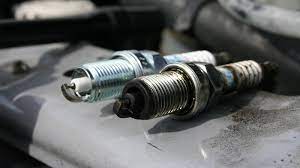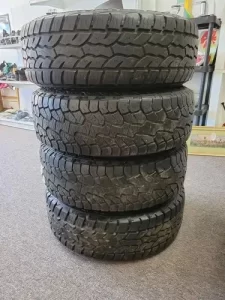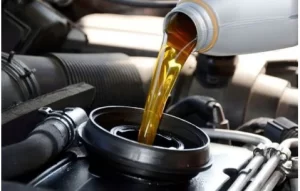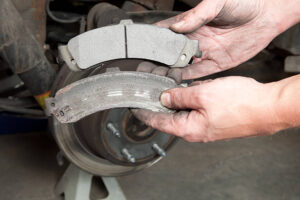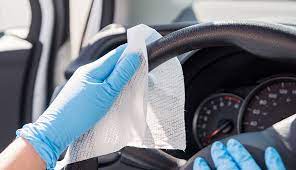
The engine of a car is like the human heart. Its performance is determined by how healthy it is. Regular maintenance and oil changes help to keep your car’s engine running smoothly. However, factors like the age of the vehicle, an irregular oil change, or not using it for an extended period can affect performance. In such situations, car engine flushing is a great solution. Continue reading to learn more about engine oil flushing.
What is engine flushing?
The name of the process suggests that it is used to remove sludge and carbon from the engine. Engine flush additives are used to remove impurities. Engine flushing is a process that eliminates impurities and carbon deposits from the engine’s internal parts.
Several factors, such as the age of the engine, low-quality fuel or oil, incorrect fuel composition, or irregular oil changes, can cause carbon deposits or sludge. Sludge buildup in the engine can cause a decrease in power and other problems, as we will discuss in the next section.
Do I need to flush my engine?
This depends on several factors, including the age and performance of your vehicle, its maintenance history, and how it has been maintained. Below are some scenarios that may require an engine flush.
Your car engine may need flushed if it is older or has logged more than 40,000 kilometers. As kilometers increase, The engine’s internals becomes more susceptible to sludge and carbon deposits. The flushing procedure keeps your machine in good condition and will not affect its performance.
According to the manufacturer, the chances of sludge accumulation are high if the car isn’t maintained correctly or the engine oil still needs to be changed. Flushing your engine will clean its internals.
If you drive in stop-and-go traffic all the time or only drive a few kilometers a month, consider flushing your engine every 30,000-35,000 km. This is because driving in such conditions can cause the engine oil deposits to build up. Washing the machine will remove the sludge.
If your car has been parked for an extended period, you may need to flush the engine. Engine oil can accumulate sludge and damage internal engine parts. It’s best to clean your car’s internals before you drive.
It may seem like an easy process. Ignoring it could cost you dearly, as it can cause serious problems. Sludge accumulation inside the engine may cause malfunctions of vital sensors, valves, and spark plugs. This can also cause soot to come out of the exhaust.
The same logic holds when it comes to engine oil flush. This is a preventive step to increase engine performance, life, and fuel efficiency. Flushing does not mean your engine will produce more power. Engine flushing is primarily used to remove carbon and sludge from the engine. Clean engines run efficiently and deliver optimum performance.
How to flush an engine?
Whether you have a petrol or diesel engine, performing an engine flush is easy. This procedure uses a high-grade additive to flush out the carbon and sludge from the engine.
Engine flushing can be done in three ways. Your mechanic will decide the best method for your vehicle based on its engine condition.
Engine oil sludge symptoms
How can you tell if sludge is forming in your engine? You don’t need to be an expert on engine functioning. You only need to watch for some symptoms that indicate engine sludge. Here are some signs that indicate an engine with excessive sludge.
Check Engine Light: Your car’s check-engine light may illuminate if you have an issue with engine components. Sludge and improper oil flow can cause damage to parts and sensors. The engine check light will alert you to the problem. When this light appears, visiting the nearest service center is best.
Check Oil Light: The check oil light will illuminate when the oil is insufficient, or there is low oil pressure. Sludge in the engine is responsible for this. Check engine oil lights can be triggered by thickened oil. If you see the check engine oil light on the dashboard of your vehicle, it is essential to have the engine checked immediately.
Low fuel economy: Due to the thick, sticky sludge deposits on engine components, the engine is under stress and must work harder. This leads to increased fuel consumption. The fuel economy will be affected. Sludge can cause your mileage to drop without changing the way you drive.
Engine Overheating: The role of engine oil, as mentioned previously, is to reduce friction and lubricate moving parts. Sludge has the opposite effect. The sludge increases friction between moving engine components. This friction leads to overheating. Sludge may be the cause of your car’s overheating.
The benefits of an engine flush
Here are some of the benefits of engine flushing.
Engine flushes prevent and remove sludge. You can avoid expensive repairs by preventing the damaging effects of sludge.
Flushing removes the carbon deposits that have built up over time.
The engine will remain idle if the car is left parked or if you do not drive it as often. This is the perfect environment for sludge to form. In such a situation, an engine flush can increase the engine’s lifespan.
An engine flush is a good idea if you’re buying a used vehicle and need documentation about engine maintenance. This can help you avoid costly repairs.
Flushing of the engine cleans its internals, resulting in a more efficient machine. An efficient machine improves fuel economy.
Radiator flush for cars
A radiator’s primary function is to cool the engine. The radiator circulates coolant fluid or antifreeze inside the machine to maintain the desired temperature. The coolant flow can be hampered by sludge buildup in the radiator. This leads to overheating.
Radiator flushing is similar to the engine flush. It’s a simple process. When you bring your car in for routine maintenance, the mechanic should be able to do it. This involves draining the existing coolant and then pouring water with radiator flush liquid into the radiator.
Then, start the engine. Allow it to idle. Drain the radiator after the engine cools down. Fill it with water and repeat this process until you see clean water coming out. Finally, fill the radiator with fresh coolant. You must seek the help of a mechanic who has experience in flushing radiators. This is because it’s a vital component of your vehicle.



